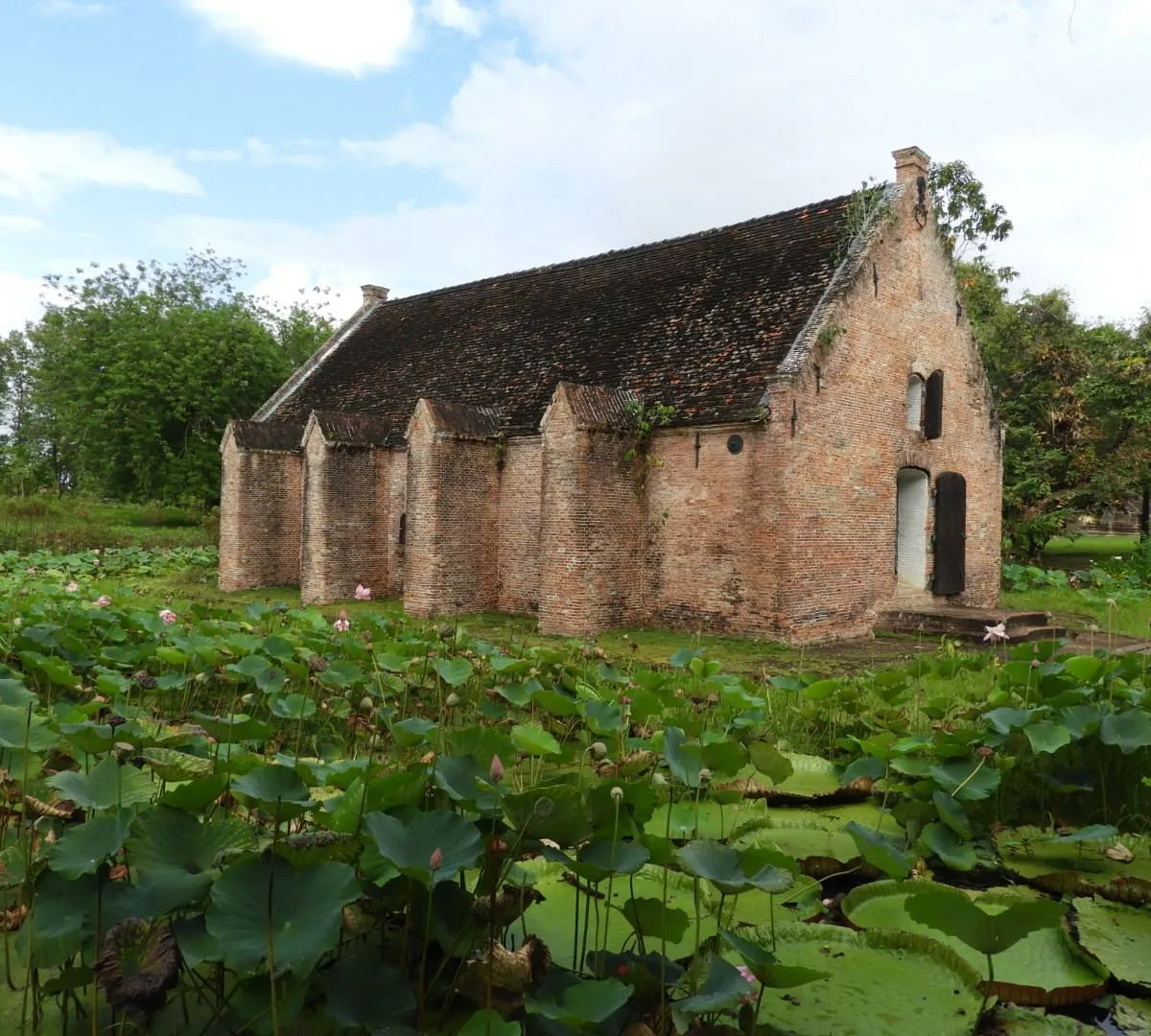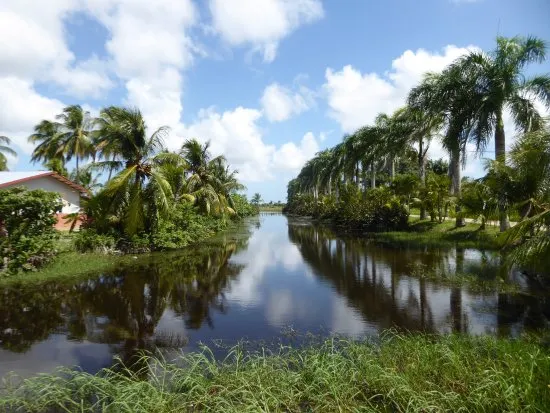1. Overview & Address of the Place
The Presidential Palace of Suriname (Presidentieel Paleis) is a prominent historical building located in the heart of Paramaribo, Suriname. Situated on Onafhankelijkheidsplein (Independence Square), it faces the Suriname River and is surrounded by other significant structures such as the National Assembly and the Ministry of Finance. The palace stands as a testament to Suriname’s colonial past and its journey to independence.
Location – Google Maps link
2. History
- Construction Beginnings (1730): The original structure was built in 1730 by Governor Carel Emilius Hendrik de Cheusses, expanding upon an existing governor’s residence
- Renovations (1780): Governor Bernard Texier undertook significant renovations, adding a grand gallery and a third floor to the building.
- Expansion (1911): In 1911, the palace was expanded to its current size, incorporating a portico and terrace, enhancing its grandeur.
- Architectural Style: The palace showcases Dutch colonial architecture, characterized by its white facade, arched balconies, and neoclassical elements.
- UNESCO World Heritage Site: In 2002, the historic inner city of Paramaribo, including the Presidential Palace, was designated a UNESCO World Heritage Site.
- Symbol of Independence: Since Suriname’s independence in 1975, the palace has served as a symbol of the nation’s sovereignty.
- Current Use: While still the official residence of the President, the palace is primarily used for governmental and diplomatic functions.
- Surrounding Gardens: The rear of the palace opens into the Palmentuin (Garden of Palms), a tranquil park with royal palms and statues of national figures.
- Public Access: The interior is not open to the public; however, the exterior and surrounding areas are accessible for viewing and photography.
- Cultural Significance: The palace stands as a prominent example of colonial architecture and plays a central role in Suriname’s national identity.
3. What Makes the Presidential Palace Popular?
The Presidential Palace is renowned for its elegant colonial architecture and its central location in Paramaribo. Its proximity to other historical landmarks and the serene Palmentuin adds to its appeal. The building’s significance as a symbol of Suriname’s independence and its role in hosting governmental events make it a focal point for both locals and visitors.
4. Overall Ratings (1 to 5 Stars)
Rating: ★★★★☆ (4/5)
The Presidential Palace is a must-visit for those interested in Suriname’s history and architecture. While the interior is not accessible, the exterior and surrounding areas offer ample opportunities for exploration and photography.
5. Weather
Paramaribo experiences a tropical rainforest climate with high humidity and temperatures averaging around 30°C (86°F). The wet season runs from December to July, with the heaviest rainfall from April to July, making the drier months (August to November) more favorable for travel.
6. Nearest Five Hotels
- Royal Torarica – A luxury hotel offering modern amenities and river views.
- Hotel Palacio – Provides upscale accommodations with a range of facilities.
- Torarica Resort – Features resort-style amenities and a tranquil setting.
- Eco Torarica – A budget-friendly option with essential comforts.
- Hotel Krasnapolsky – A historic hotel located in the city center.
7. Timings
While the interior of the Presidential Palace is not open to the public, the surrounding gardens and Independence Square are accessible year-round. It’s advisable to visit during daylight hours for the best experience. )
8. Time Required to Visit
A visit to the exterior and surrounding areas typically takes about 30 minutes to 1 hour, depending on one’s interest in photography and exploration.
9. Entry Fees & Ticket Booking Details
There are no entry fees for viewing the Presidential Palace from the exterior. Since the interior is not open to the public, no tickets are required.
10. Things to See & Do
- Photography: Capture the grandeur of the palace and its surroundings.
- Explore Independence Square: Visit nearby landmarks such as the National Assembly and the Ministry of Finance.
- Stroll Through Palmentuin: Enjoy the serene environment of the Garden of Palms located behind the palace.
- Attend Events: Participate in national events and ceremonies held in the vicinity.
11. Best Time to Visit
The optimal time to visit is during the drier months from August to November, when the weather is more conducive to outdoor activities.
12. Nearest Parking Spots
Parking is available near key attractions in Paramaribo, particularly around the Presidential Palace and nearby landmarks. Visitors are encouraged to use public transportation or taxis for easier access.
13. Tips for Visitors
- Wear Comfortable Footwear: The area around the palace and Independence Square is best explored on foot.
- Stay Hydrated: The tropical climate can be hot and humid.
- Respect Local Customs: Be mindful of cultural norms and practices.
14. How to Reach the Place
The Presidential Palace is centrally located in Paramaribo and can be easily reached by taxi, public transportation, or on foot from nearby accommodations and attractions.
15. Nearby Attractions to Combine for the Visit
- Fort Zeelandia: A historic fort housing the Surinamese Museum.
- Saint Peter and Paul Cathedral: A wooden Gothic Revival cathedral in the city center.
- Central Market: A bustling market near the palace where visitors can experience local Surinamese products and culture.
- Waterkant: A historic riverside street lined with colonial architecture, vibrant markets, and cultural landmarks.


